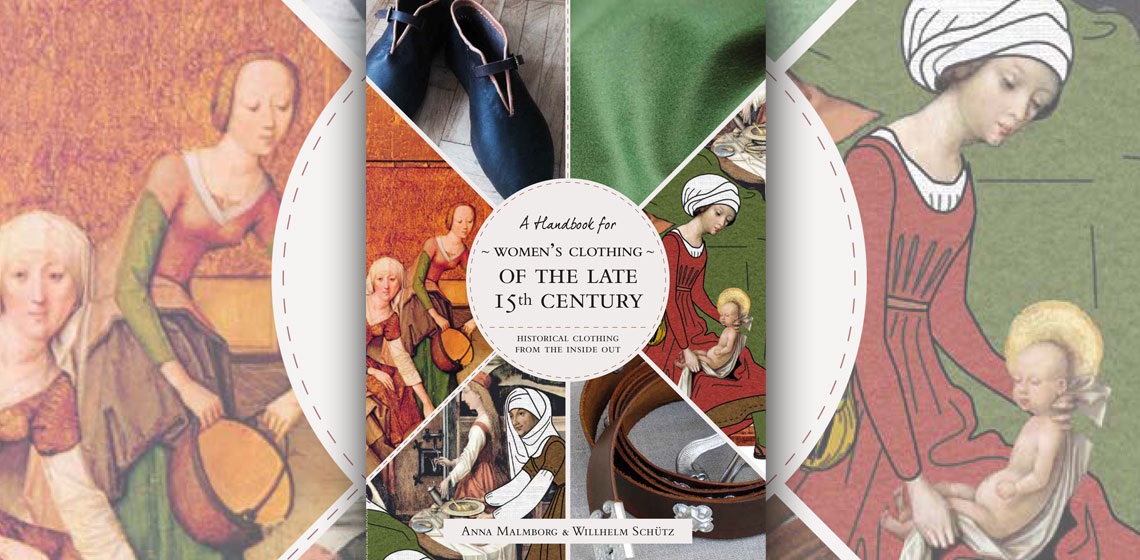
Medieval re-enactment, especially late 15th century, has become increasingly popular during the past 15-20 years and it seems like the growth will not stop anytime soon (unless the Viking re-enactment takes over as a consequence of the popular culture and mainstream focus – but that is another discussion). In 1994 the book ''The Medieval Soldier'' by Gerry Embleton and John Howe was published. It has been the bible for many a medieval re-enactor and has also been one of the reasons why the late 15th century has been increasingly popular to re-enact.
Since the 1994 publication, nothing much has been written with regards to primary source and if you do not have a strong re-enactment group to back you up and help you get started with getting your kit done, it is a long road filled with traps and loopholes and every chance of getting it wrong from the beginning.
The internet has for sure made it a whole lot easier to browse for sources and to follow other re-enactors to see how they interpret the sources and how they make their gear, but now there is a perfect handbook within reach, so no newbie should ever feel alone again.
The book is part of a series ''Historical Clothing From the Inside Out'' from different historical periods, covering the early bronze age to modern history. This and its twin ''A Handbook for Men's Clothing of the Late 15th Century'' are the first to be published. I have only read the book on women's clothing and therefore this review will focus on this series. However, I look very much forward to reading the others as they are published.
This book focuses on Northern Europe which makes it easier for the reader to understand what source material is available. I lost track of how many times I have seen a Nordic person, portraying a Nordic medieval person but wearing something Burgundian or from Italy and France – something that is very unlikely to have happened in the period in question. It might seem like a small area to focus on, but in fact it is not, and the source material is varied and good. When writing a handbook that is supposed to be easily applicable and useful it is very important to narrow the subject down to a minimum and this has been done very well.
The authors are exhaustively knowledgeable about the medieval period and are well founded in the source material in use. Anna Malmborg is an archaeologist with a lifelong passion for the medieval period and textiles, whilst Wilhelm Schütz is originally a blacksmith with a focus on recreation of historical tools and weapons.
The book is not long, 48 pages, but is very well researched, giving the reader an overall understanding of the women's dress in the late 15th century. It takes you through the dress step by step; from the inside-out, giving examples of how to wear your veil, what kind of overdress to wear for a stroll in the town and what to wear whilst working at home. Throughout the book there are period colour illustrations, reconstruction photos and modern drawings to illustrate a point in question and to show how varied the source material is. There are no patterns in the book – there are drawings of pattern pieces but these are not recommended to scale up and use as a pattern; these are only meant to give the reader an idea of the shape of a garment. One could hope that the series at one point would be followed up by a pattern source book! That would fulfil any re-enactors dream.
The book does not go into details or discusses the sources or why a certain source is used to back up an example. The text is easily read, not too long and written in clear and simple English, making it easy to understand. It is not an academic book with notes and references plastered all over, and that is perfectly okay. It is a handbook, a helping hand in the first steps in recreating your own 15th century wardrobe, and it gives you a very good overview of what is needed and what is essential for the process. If you wish to carry out your own research the authors have thoughtfully includes a section at the back of the book with links and references for further reading and research.
If you are well informed on, and have a long career in medieval re-enactment, this book might not be able to offer much. However, I still think that it is worth a read – one can always improve and learn new things, and the source material at the back of the book is useful for anyone.
The book is very, very useful for those new to the re-enactment world or for those who want to improve their gear and learn more about primary sources. It is a book, forming part of a series, that has been missing in the field of recreating history, re-enactment and living history. I recommend anyone new to this passion to obtain a copy of the book for the period in question – it is a very handy starting point.
I for one cannot wait until they release the books regarding clothing from the late 15th century! I will definitely obtain copies for the shop at Middelaldercentret.
Book Information:
Malmborg, A. & Schütz, W. 2018. Handbook for Women's Clothing of the Late 15th Century. Part of the series Historical Clothing From the Inside Out. ChronoCopia Publishing, Sweden. ISBN 978-91-981056-0